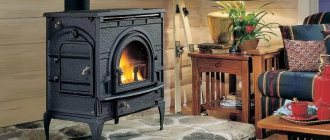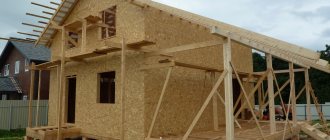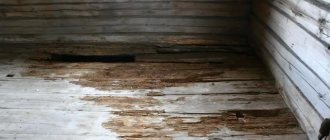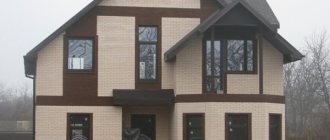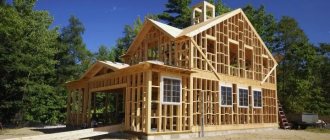Frame construction has a number of undeniable advantages over conventional houses. It allows you to quickly build, does not require special professional skills, and is characterized by the simplicity of the design of houses. In addition, heat saving indicators are high.
In this article we will talk about how to arrange the heating of a frame house, what requirements are imposed on the heating system and which one should be preferred. It must be said that frame houses allow you to organize heating of any type in them - from a traditional Russian stove to convectors.
Heating system for a frame house
There are numerous options for organizing heating in a frame house, which occurs due to the good heat conservation of such types of buildings. Any coolant can be used. The choice of heating system depends on the personal preferences of the home owners and the budget allocated for this matter.
A frame house can be heated:
- Using gas (natural, liquefied), diesel fuel;
- Solid fuel;
- Electricity;
- Systems that receive energy from the earth or the sun.
The best option is to install a combined type frame house heating system. This approach will allow you to heat your home regardless of environmental conditions.
Combined heating may include an electric boiler, a solid fuel fireplace, air heating of a frame house and solar panels on the roof. At night, the house will be heated with water in an electric boiler and in a heated floor system, which will allow the use of a night tariff to calculate electrical energy; in the evening, you can use a solid fuel boiler, and when there is no precipitation, solar panels. In addition, some of the system elements are replaceable with analogues. For example, radiators can be used instead of heated floors, and a gas boiler can replace an electric one.
Fashionable system - warm baseboard
Among modern heating systems for frame houses, warm baseboards can also be distinguished. It is a type of water heating. The point here is that radiators are laid along all the walls. They are only 20 cm high. The tubes and radiator elements themselves are hidden under a decorative protective profile. Such miniature size and excellent aesthetic appearance will add special sophistication to any room.
Its heat exchanger is made of copper-aluminum materials, so it has very good heat transfer. It is not subject to corrosion and is not afraid of high pressure. The heat from such a baseboard is evenly distributed throughout the room, due to which there are no cold zones. Therefore, it is very comfortable to be in such a room.
- Author: Mikhail Malofeev
Rate this article:
- 5
- 4
- 3
- 2
- 1
(1 vote, average: 5 out of 5)
Share with your friends!
Heating system installation procedure
Before starting work on installing a heating system, you need to decide on its type. Afterwards, you need to draw up a project for placing its elements throughout the house, purchase the necessary equipment and materials for installation.
Thanks to the frame structure, laying heating pipes can be carried out at the very end of construction work. But if you don’t want to disassemble the wall cladding, then you should think about the heating system in advance.
As a rule, heating pipes are mounted on top of the frame and finishing; placement between the wall and sheets of drywall is often found. The external option is preferable, since it will not be necessary to perform any actions with the structure of the house, and access to communications will also be provided in case of their breakdown.
If you plan to install a combination boiler, you will need to strengthen the foundation under its location in advance, since the unit has considerable weight. In addition, it is necessary to consider a fire extinguishing system in case of an emergency. In this regard, a combination boiler is a rather problematic option.
Features of frames
Before considering options, it is necessary to identify the main features associated specifically with this type of structure. What is a frame? This is a house made using the so-called Canadian technology. Its popularity in the CIS is due to several factors:
- Similar climatic conditions in Canada with Russia, Belarus and neighboring countries
- Low cost of construction, which is more economical than traditional construction methods
- High speed. So, for example, good companies can build such a home within a month
- Quite a good set of walls and ceilings that retain heat indoors
- Manufacturability coupled with durability. The estimated lifespan of such buildings can reach 100 years.
- Possibility of free planning, allowing owners to choose the number of rooms and their size at the design stage
It is the last factor that does not allow us to give any exact recipes for heating. After all, different areas require different approaches to heating the air. But the basic method remains the same. Let's move on to them.
Electrical heating
Heating for a frame house using electricity is a fairly popular option, but the cost of constantly heating the building with its help is relatively high. Its installation does not require obtaining any special permits, it can be carried out in any conditions, and there is no need to spend money on consumables.
The electric boiler is installed according to the rules for installing any other electrical equipment. Wiring is calculated based on the power of the equipment with a reserve for overloads and requires reliable insulation.
Liquid fuel
This is probably the last option that should be considered when solving the problem of how to heat a house if there is no gas. It's not even about the price of energy resources - they can be different. The most expensive diesel fuel allows you to obtain thermal energy at the same cost as using liquefied gas from cylinders. The price of heat when burning fuel oil is the same as that of coal-fired boilers, and “working off” practically compares heating costs to the level of natural gas. But…
In terms of equipment cost, this is one of the most expensive fuel-using systems. In addition, these boilers are “capricious”, requiring regular maintenance and the same complexity of maintenance as the fuel supply and injection systems of a diesel car. There are also disadvantages such as air pollution from liquid fuel combustion products, as well as high noise levels from the operation of the fuel pump and burner.
Maintenance of an oil-fuel boiler is much more difficult than any other Source enemcon.com
Warm floor
The underfloor heating system is installed on subfloors. It is first necessary to install a vapor barrier on the surface to protect the floor from moisture. Next, heat-reflecting material is laid to prevent heat dissipation, after which heating mats are laid. Finally, finishing and installation of heated floor control systems are carried out.
The advantage of the solution is that warm air rises up from the surface of the floors and is distributed throughout the entire space of the room, and cold air falls to the bottom, where it also warms up.
Classic fireplace design
The standard version of the fireplace consists of the following parts:
- the firebox is a place in the fireplace that is U-shaped and framed by a portal. For better combustion of combustible material, a grate or hearth is installed in its lower part;
- perval or otherwise smoke tooth is a special narrowing to the chimney that provides better draft;
- chimney - provides fairly good removal of combustion products and excellent air supply.
The modern version of the fireplace provides the most accurate non-standard heat exchange system, which increases the efficiency of the device and ensures the preservation of a certain amount of air in the room. Thus, the air under the grate is not collected from the room, but comes from outside. Special holes are formed in the floor of the room, which supply air to the channels from the back wall of the firebox. This heated air begins to move to the tubular heater a little below the pass, and only then into the room. As a result of this, the air will take heat from the combustion products and transfer it to the room and reduce the temperature of the exhaust gas.
Although, this solution does not fully compensate for the air gap from the room. For example, it is not recommended to install fireplaces in frame houses in rooms with a volume of less than 30 m2?
This is especially important for modern houses with sealed windows and doors of increased density
Foundation for a classic fireplace
The weight of a classic fireplace of 15 tons poses a significant problem for different types of foundations. All projects of frame houses with fireplaces include the installation of a special, more powerful base under the hearth or stove. If this foundation was not planned, then you can safely forget about installing a fireplace in a frame house.
The frame house itself is light in weight when compared to a brick building. Therefore, the foundation for it is usually made lighter, for example, a shallowly buried strip. A stone fireplace is another matter; under it it is necessary to install a monolithic concrete slab, around the entire perimeter 30 cm larger than the original dimensions of the fireplace. The foundation must be buried below the freezing level of the soil and ground and not connected to the foundation of the house. A strip foundation can swell when the soil freezes and thaws, but monolithic ones will not react to this in any way, which is why it is prohibited to connect them into one single system.
A more correct option would be a regular fireplace in a frame house on screw piles. Swelling when the soil freezes does not affect this foundation at all, and the base of the fireplace and walls can be connected.
In a frame house with a foundation on screw piles, additional metal sheets are laid under the fireplace, which are tied together with a channel and special sheet metal 10 mm thick.
This steel platform under the fireplace can fully withstand a certain load.
This method is used in the construction of special outdoor stoves or barbecues.
Fireplace safety
The fireplace is an open type structure, that is, access to the fire is open all the time, and this, of course, creates a characteristic threat. In order to reduce it, the fireplace is installed in compliance with a certain number of rules.
Consider these rules below:
- The walls of the fireplace and chimney should not come into contact with the frame and insulation material. The vapor barrier layer and sheathing at the joints are protected with special heat-resistant building materials.
- The fireplace is built in and mounted into the internal partition, made of sand-lime brick in this place. This is the best option.
- The fireplace sits on its own concrete base. The danger zone in front of the firebox is covered with a special fire-resistant coating, for example, brick, tile and stone, it all depends on the building material of the main flooring.
- The chimney pipe is removed in compliance with all fire safety rules: the pipe must be insulated and insulated at a certain intersection of ceilings or walls.
Electric boiler
You can install an electric boiler yourself, but a number of nuances should be taken into account:
- The cross-section of the wires must comply with the requirements specified in the documents for the equipment;
- The switch may only be placed in the same room as the boiler;
- If you plan to use a boiler, then it should be located above the electric boiler;
- Wiring in a frame house must be done in advance;
- Installation of electrical equipment requires strict adherence to safety precautions in order to avoid electric shock;
- The boiler must be regularly inspected for leaks and damage to the insulation.
Single frame frame 9*13 on USHP ~110 m2
The house was built in 2013-2014, wall insulation 200mm, top floor 300-400mm (ecowool), ceilings 3 m.
Heating: gas boiler 24 kW, main gas and only VTP/USHP; House operating mode: permanent residence, ~22 degrees; Average bill for heating in winter: ~1500 rubles per month; Average gas consumption: ~250 m3/month, at the time of publication 1 m3 = 5.97 rubles.
During the winter of 2017-2018, approximately 700-750 m3 of gas was burned, about 200 m3 in December, 300 m3 in January and 250 m3 in February, the readings are not written off from the meter every time. It is also worth noting that the operating mode of the gas boiler (and the choice of its power) in this house could be not the most optimal, maybe there are still ways to optimize.
At the same time, there are additional costs for electricity, which powers all household appliances, kitchen appliances, lighting, etc. day/night figures in kW/h:
- January 2022: 220\154;
- December 2022: 200\120;
- November 2022: 282\190.
That is, another thousand and a half at a city tariff of 4.55 \ 2.62 rubles. (day\night) is spent on electricity - this is the total consumption according to the meter on the fence.
There are also some old statistics from January 2015, when the house was heated with electricity. Total electricity consumption for 8 weeks is 3500 kWh: 2250 day, 1250 night.
2250*3.55 + 1250*2.14 = 10,662.5 rub. for two months (then there were different tariffs). The weather outside in the first month was -2-1-0+1+2+3+4, this is approximately the weather, freezing at night, dripping during the day. At home +21-22. In the second month it was down to -18, about 3 weeks of frost, a week of thaw (no warmer than +2).
During the warm month, consumption was 1500 kW/h, of which 500 at night, 1000 per day or 4,620 rubles. During the cold month, consumption was 2000 kW/h, of which 650 at night, 1350 per day or 6,183 rubles.
There is some information about this house here.
Gas heating
Heating a frame house with gas is the most popular method. A gas boiler has long served as a reliable source of heat in the house.
It should be noted that gas supply to the house is not so fast and not so simple. You will first need to obtain permits from various authorities over the course of several months.
Gas heating can be installed only with the help of special equipment, which is not cheap. Installation and commissioning work is just as expensive, which is why many people prefer electric heating systems.
However, if we consider the long term, gas heating will be much cheaper than other types of heating. The low price of gas covers the cost of installing equipment. In just a few years, you will “recoup” all the money spent.
An important condition for using electric heating
Most importantly, to use electric heating without spending too much money, it is important that your home is very well insulated! This is extremely important! That is why the inhabitants of the right frame houses use ordinary electric convectors and chuckle when looking at the inhabitants of brick and block cottages sighing about the exorbitantly high heating bills!
When is it more profitable to use electric convectors, and when is it more profitable to use an electric boiler with radiators or heated floors?
Some customers ask us which electric heating option to choose, electric convectors for each window or an electric boiler with radiators?
Our answer is:
If you are building a garden or country house in which you live only from spring to autumn, then the choice is obvious - electric convectors! They are indifferent to sub-zero temperatures, they will cost less, and their installation can be done by anyone without a degree in electrical engineering. In case of failure, the convector is simply replaced with a new one. Their cost is almost the same as that of heating radiators, and they do not require pipes, pumps, or a boiler.
The disadvantage of electric convectors is that inexpensive models dry the air, not everyone likes this.
If your home is intended for permanent residence, and you prefer heated floors, then the choice is definitely an electric boiler with water heated floors.
In other cases - according to your taste.
Stove heating and fireplaces
Heating a frame house without using gas can be done using a stove or fireplace. Since time immemorial, people have loved to look at fire, which gives a feeling of coziness and comfort. Modern solutions offer many ways to contemplate “live” fire. Their use makes it possible to create a feeling of comfort in the house, and the fireplace itself can act as a heater.
Among the advantages of a fireplace are high heat accumulation and its uniform distribution. The materials for making fireplaces are presented in a wide range, so everyone will find something to suit their taste. Of course, fireplaces are not without their drawbacks. The most tangible is the need to purchase firewood to keep the fire going. In addition, when using it, it is very important to follow fire safety rules.
An alternative option is stove heating of a frame house. If you constantly add firewood as needed, the stove will maintain the required level of heat in the house for a long period of time. In addition, the premises will be heated already five minus after kindling. There are also very different options for the implementation of stoves; the unit can be placed in a corner, near a wall and in other places. In addition, the oven can be used for cooking food.
Selection of radiators - what are they?
Probably, many remember that recent period when cast iron radiators were installed in all apartments and houses. For a more presentable appearance, it was necessary to paint the radiator unit once every 1–2 years. But, despite this main drawback, today they have the leading ability to withstand high pressure. They can also boast a long service life.
If the main thing when choosing is price, then you can pay attention to steel radiators. They look quite attractive. In terms of performance, they have good heat transfer and convection. Due to their price and positive characteristics, they have become widespread. But their main disadvantage is their susceptibility to corrosion.
Using a solid fuel boiler
Heating for a frame house using a solid fuel boiler is the best option for houses without gas supply. It allows you to use a wide variety of raw materials for heating - firewood, peat briquettes, wood and paper production waste. In a solid fuel boiler, not only the raw materials themselves are burned, but also the gas released during the process, which can significantly increase the efficiency of the equipment.
The principle of operation of a solid fuel boiler is as follows: through the heat exchanger pipes in the boiler, the air mass is heated, which subsequently enters the premises of the building. The convection process makes it possible to increase the temperature in the house to the required values within a short time.
Equipment operating on solid fuel supports several operating algorithms:
- Stage-by-stage heating of the house;
- Fast heating;
- Maintains the set temperature for 12-15 hours.
Latest generation systems
Many people have heard about “warm baseboard” or “contour” class systems. Such heating, in fact, is built according to the classical scheme of heating and coolant circulation, but differs in slightly different standards, namely:
- the amount of coolant in the system is small;
- the circulation rate is high and occurs forcibly with the help of pumps, whereas classical systems can use natural convection circulation.
- As a result, contour systems have the following advantages:
- can be installed by hand without significant amounts of construction work;
- often do not require the creation of technical areas where heating equipment will be located.
However, heating with contour systems also has disadvantages:
- the initial period of warming up the house lasts a very long time;
- when the heater is turned off, the system temperature drops quickly;
- electricity consumption is necessarily higher, since even circuits using gas heaters use circulation pumps.
It is possible to build a “warm baseboard” or “circuit” system using only electric heaters, but the cost of using such a solution is very high.
Nuances and conclusions
To ensure maximum effect from the heating system, the frame house must be properly insulated. At the same time, not only floors and walls require thermal insulation. According to research, the greatest heat loss occurs through ceilings. To avoid this, you need to insulate not only the ceiling, but also the attic space, if there is one in your house.
This concludes our review of the most popular options for heating a frame house. Any solution has its own list of pros and cons. When choosing a heating system, you should take into account the area of the building, whether it is possible to supply gas and other nuances. However, the most rational option would be to use a combined type of heating.
— Why not install cheaper wall convectors?
It would seem - indeed, because convectors do not require installation of a boiler, pipe routing, and so on. One-time costs are lower. At the same time, their energy consumption is similar to that of a system with an electric boiler. But we shouldn’t discount the following fact: if we install an electric boiler, the cable is connected to the boiler - and we get one potentially dangerous point. If we are talking about convectors, then the number of such connection points is equal to the number of convectors. That is, their operation requires very competent electrical wiring. All cables must be twisted very tightly, the cable must be copper, the twists must be insulated, and all this must be in fireproof casings.


